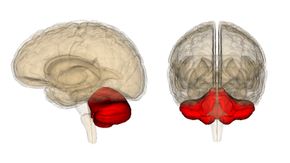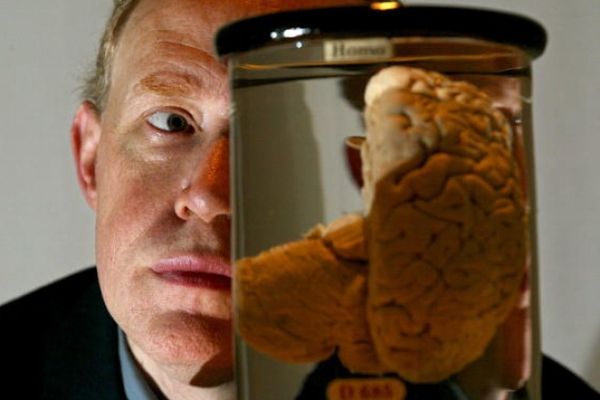Named for the Latin term for "little brain," and hanging off the back of the main brain, the adorable sounding anatomical feature packs a major punch for its diminutive size. "The brain weighs about 3 pounds (1.36 kilograms) and the cerebellum makes up about 10 percent of that," says Janice Wiesman, M.D., clinical associate professor in the department of neurology at the NYU School of Medicine, in an email interview. "It's made up of three lobes, the vermis in the center ('vermis' means 'worms' in Latin and it is a long, thin, structure that looks like a worm), and a cerebellar hemisphere on each side of that."
"It weighs about 5 ounces (147 milliliters)," adds Pediatric Neurophysiology Fellow at Nationwide Children's Hospital, Daniel Freedman, D.O., in an email. "It's the coordination center of the brain and receives a large amount of sensory input from the spinal cord and brain regarding the body's movements and position. It uses this information to maintain smooth coordinated movements."
We'll get to how the cerebellum translates all that input into action in a second, but let's go deeper on the brain structure's super distinctive appearance. "It has a beautiful branched appearance which is very unique," says Parneet Grewal, a fellow at RUSH University Medical Center, in an email interview. "It has a complex circuitry and is divided into midline vermis (named for its worm-like appearance) and two cerebellar hemispheres on either side of the vermis."
"The vermis is most associated with coordinating movement of the trunk and legs and the cerebellar hemispheres work to coordinate the movement of the arms, hands and fingers," Weisman says. "The cerebellum coordinates voluntary movements like posture, balance, coordination, and speech, resulting in smooth muscle movements."
"When cut in half, the branching pattern of the cerebellar white matter required to connect all the 'folia' (Latin for leaves) can be seen," Freedman says. "This resembles a head of cauliflower or broccoli and is referred to as the 'arbor vitae' (Latin for 'tree of life')."


